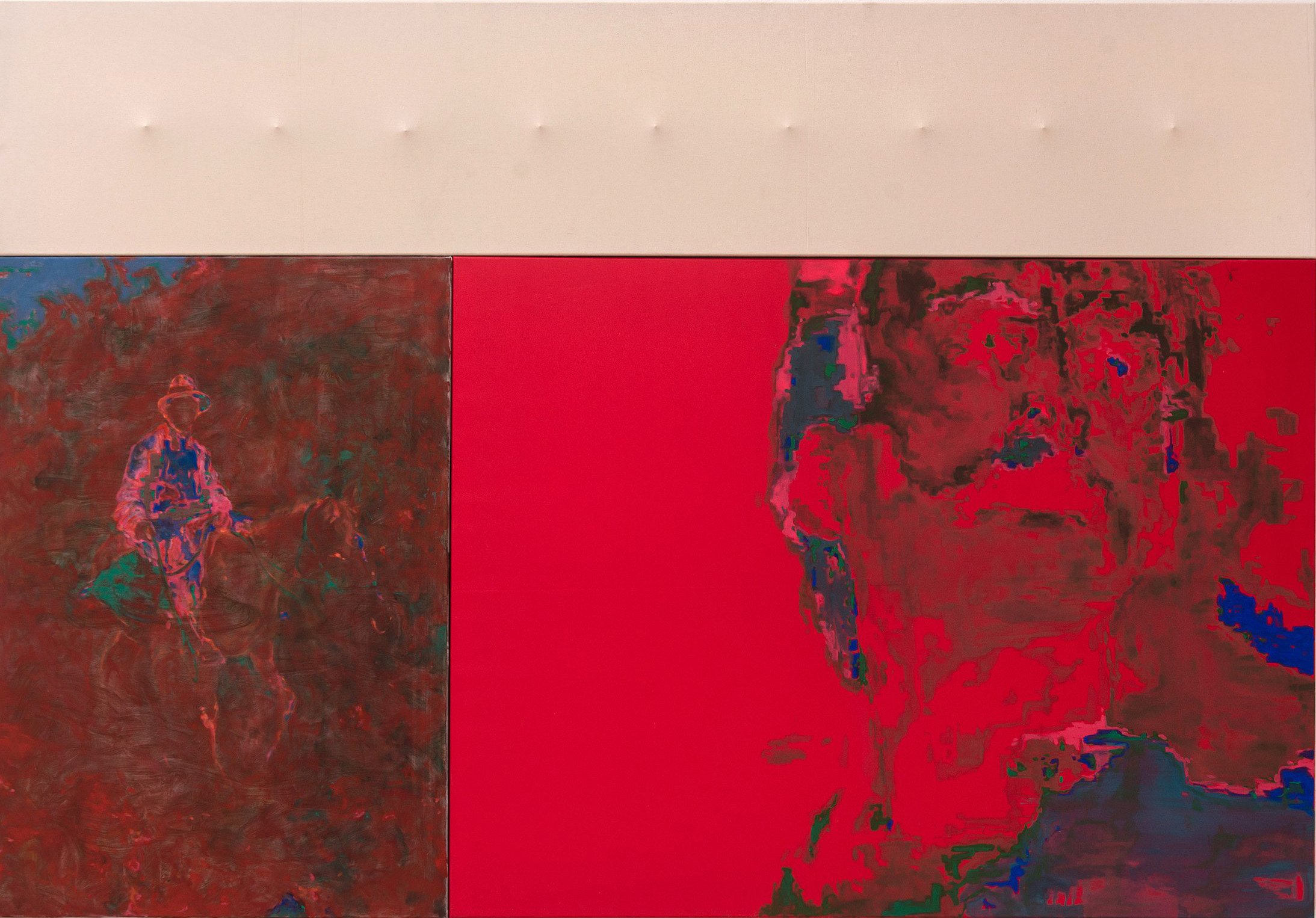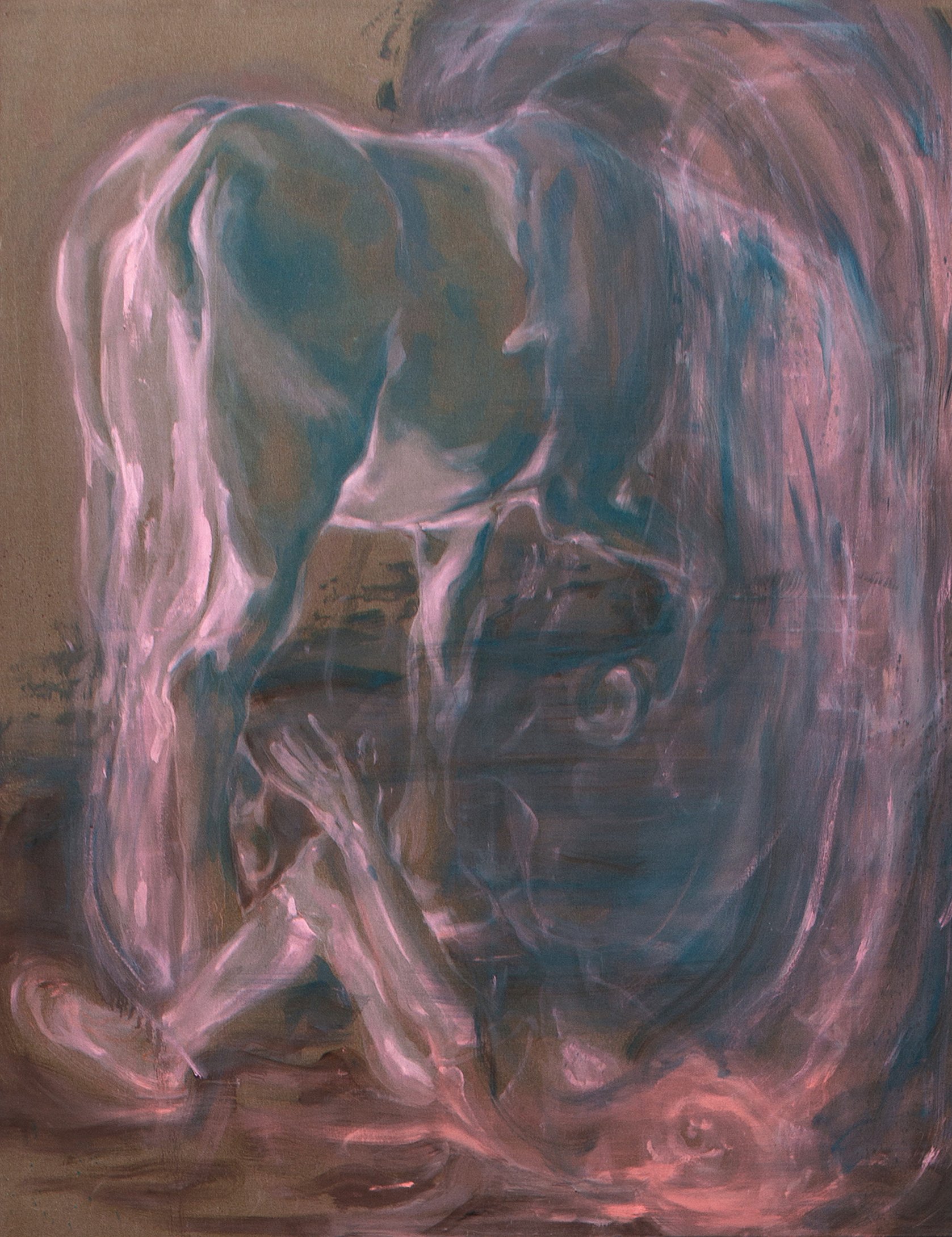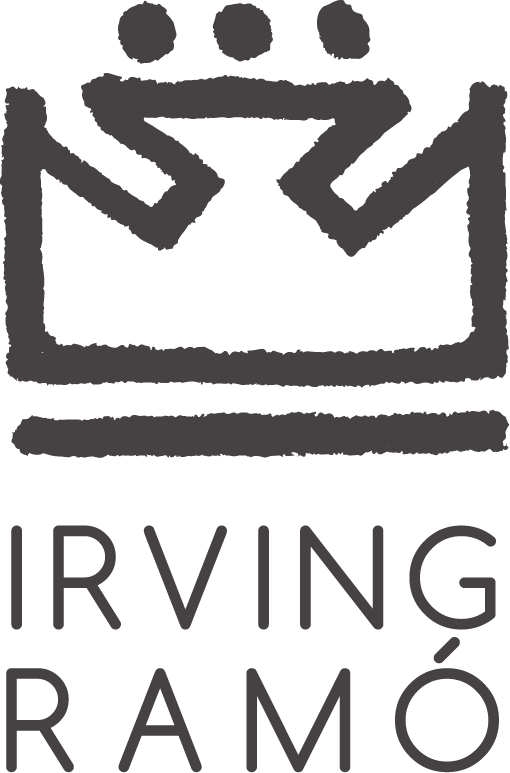
TAILBONE
In his premiere solo show in Germany, Irving Ramó investigates the colonial entanglements that have influenced his artistic practice and personal life for the first time. As a symbol for this, he utilises and undermines the long-standing tradition of the equestrian portrait.
In his works, we encounter chrome-coated bodies, a scramble of limbs, and the expansion of one entity into another. In Tailbone, Ramó invites us to think about our humanity and how we connect to our surroundings. He takes inspiration from the relationship between the horse and the rider as a physical interface. This connection stands for something already beyond the human but not something else entirely yet. Whereas the dominant narrative highlights what makes us human in additive terms: the pre-frontal cortex, opposable thumbs and the glutinous maximus, Ramó offers a different perspective and asks: "What has humanity had to give up to become human?”
Movement, constant change and a sense of displacement have been the main drivers in Ramó's practice. This appears in the subject matter of the horse and rider as an analogy for nomadism and expansionism and presents the figures in an undefined space. This narration also stems from personal context. Created in transit between Berlin, Istanbul, and Quito, the body of work presented had begun to take on a hybrid form that could allow for constant assembly and reassembly. These works are constructed in various diptychs, triptychs and other configurations into constellations that Ramó titles as "flags". Each segment of these compound works is handled differently. Some areas remain blank, others gain a sculptural character, and others become figurative, abstract, or gestural. They also function as a cartographic reference, acting as a border between different states, with divergent modes occurring in each segment. And just like flags, they are composed of abstract blocks of colour, stars and symbols.
The horse and rider function as symbols, the blocks of colour are created using different fabrics, and the stars are inserted under the surface. They appear as points that almost pierce through the canvas. These spikes reappear all over the works, both sculpturally and figuratively. Spines sprout from a seated figure's back, the jaws of a beast flash rows of teeth, and spikes grow on top of the saddle or act as a shield around the canvas. Although the first association is a sense of danger, as a defence mechanism against an unknown threat, the spikes refer to a more complex interaction. Indeed, they are the tip of the spine, the coccyx, the tailbone, and the moment of connection between the seated rider and their steed. If we started by asking: "What did humanity have to give up to become human"? Now, we might ask what we have to (re)grow to become something else entirely. The spikes might have begun as a defensive mechanism- however, upon closer inspection, they are more akin to an antenna, both sending and receiving. The spikes are the buds of mutation and define a moment when borders begin to be transgressed.
Ramó's research also focuses on the folklore surrounding the arrival of the conquistadors to the shores of South America. As silver figures descended their vessels, it is told that the indigenous peoples, who had, to that point, never seen horses before, believed the rider and the horse to be a single metallic being. Regardless of this narrative's validity, a chimeric figure had already emerged. One whose authoritarian roots are intrinsically linked to expansionist manifests. The horse-human hybrid appears as a precursor of mechanised power. To incite a counter-narration, Ramó reenacts this folklore within transhumanist speculation. In these moments, the rider and the horse become analogous to variations of symbiotic relationships. As their roles blur, it is no longer clear who is leading whom.
Ramó mixes these concurrent concepts to create polycentric images that speak of the complexity of the human condition. Within them, opposing forces and narratives coalesce into a shimmering mass in unknown territory. From within this transient space, an ongoing metamorphosis occurs. A processual expansion with no set trajectory destabilises a linear progression in favour of serendipitous ambiguity.
Text by Abie Franklin
-

Equestrian Sfumato (Flag #6)
2023
Mixed media on canvas/polyester
404cm x 185cm
-

Not all mules are horses (Flag #3)
2023
Oil and acrylic on canvas/polyester
260cm x 180cm.
-

The eden taste as the breath of an animal on your neck (Flag #5)
- We all evolve external bones as defense mechanisms -
2023
Oil and acrylic on canvas/polyester
185cm x 185cm
-

Royal wedding (Flag #4)
2022-2023
3d print, oil, acrylic and spray paint on canvas & wood panels
175cm x 90cm
-

Delusion of power
2023
Oil and acrylic on raw canvas
220cm x 160 cm
-

Loop of Expansion (Flag #2)
2023
Oil and acrylic on raw canvas
175cm x 125cm
-

No fear to anyone who wants to scream (Flag #6)
2022-2023
Oil on raw canvas
165cm x 135cm
-

WISHBONE
2023
-Padre nuestro que estas en el..-
In Collaboration with TIMOTI GASBARRO
Bronze
Boot sized






